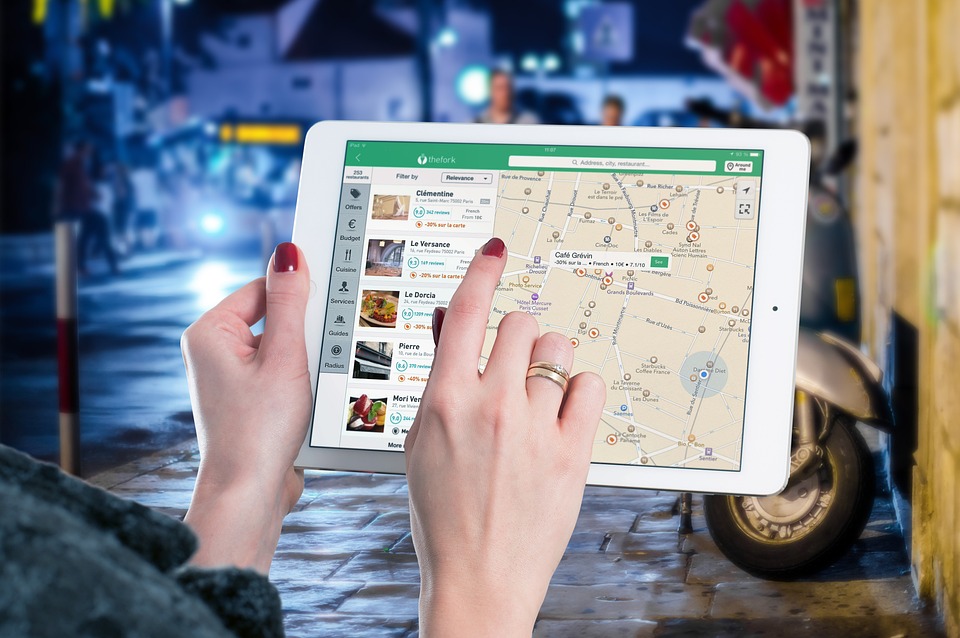
How to Navigate English-Speaking Airports: A Traveler’s Guide
How to Navigate English-Speaking Airports: A Traveler’s Guide
Introduction
Traveling to English-speaking countries can be an exciting experience, but navigating through their airports can sometimes be overwhelming. From understanding airport signage to finding your way around, this guide will provide you with useful tips and information to make your journey smoother and stress-free.
Understanding Airport Signage
One of the first challenges you may encounter in an English-speaking airport is understanding the signage. Most airports use English as their primary language, but it’s essential to familiarize yourself with common airport signs and symbols. These include signs for baggage claim, customs, restrooms, and departure gates. By familiarizing yourself with these signs, you can navigate through the airport with ease.
Arriving at the Airport
Upon arriving at the airport, follow the signs for immigration and customs. If you need assistance or have any questions, don’t hesitate to approach airport staff or look for information desks. They are there to help you and provide guidance.
Checking in and Security
After going through immigration, head to the check-in counters. Make sure you have all the necessary documents, such as your passport and boarding pass. If you have any oversized or prohibited items, inform the airline staff beforehand to avoid any complications during the security screening process.
Getting to Your Departure Gate
Once you have checked in, follow the signs to your departure gate. Many airports have large display boards that show flight details and gate numbers. If you’re unsure about your gate, you can always ask airport staff or refer to the information screens located throughout the terminal. It’s advisable to arrive at your gate well in advance to avoid any last-minute rush.
Exploring Airport Facilities
English-speaking airports offer a wide range of facilities for travelers. These include duty-free shops, restaurants, lounges, and even spas. If you have a long layover or extra time, take the opportunity to explore these amenities. Some airports also provide free Wi-Fi, so you can stay connected with your loved ones or catch up on work.
Baggage Claim and Customs
After landing at your destination, follow the signs for baggage claim. Once you have collected your luggage, proceed to the customs area. Make sure to have your customs declaration form filled out and ready for inspection. If you have any items to declare, inform the customs officers accordingly.
Transportation Options
English-speaking airports usually have various transportation options available, such as taxis, ride-sharing services, and public transport. Research and familiarize yourself with the available options before your trip to ensure a smooth transition from the airport to your final destination. Additionally, if you have booked a shuttle service or private transfer, make sure to follow the instructions provided by the service provider.
Conclusion
Navigating English-speaking airports doesn’t have to be a daunting task. By understanding airport signage, checking in efficiently, following the signs to your departure gate, and familiarizing yourself with airport facilities, you can make your airport experience more enjoyable. Remember to stay calm, ask for assistance when needed, and allow yourself plenty of time to navigate through the airport. With these tips in mind, you’ll be well-prepared to navigate any English-speaking airport with ease.
Tags:
- Airport
- English-speaking countries
- Airport signage
- Checking in
- Security screening
- Departure gate
- Airport facilities
- Baggage claim
- Customs
- Transportation options
Keywords:
Airport, English-speaking countries, Airport signage, Checking in, Security screening, Departure gate, Airport facilities, Baggage claim, Customs, Transportation options
The English-speaking airports provide an array of facilities and amenities for travelers from around the world. However, navigating through these airports can be a daunting task for non-native English speakers. In this traveler’s guide, we will discuss how to navigate English-speaking airports efficiently and provide essential tips for a stress-free experience.
Understanding airport signage is crucial for navigating any airport. While English is the predominant language used in most airports, it is essential to familiarize yourself with common airport signs and symbols. Signs for baggage claim, customs, restrooms, and departure gates are universally recognizable and will help you find your way around the airport effortlessly.
Upon arriving at the airport, follow the signs for immigration and customs. If you have any questions or need assistance, don’t hesitate to approach airport staff or look for information desks. They are there to guide and support you throughout your journey.
After going through immigration, head to the check-in counters. Ensure you have all the necessary documents, including your passport and boarding pass. If you are carrying any oversized or prohibited items, inform the airline staff beforehand to avoid complications during the security screening process.
Once you have checked in, follow the signs to your departure gate. Many airports have large display boards that provide flight details and gate numbers. In case you are unsure about your gate, ask airport staff or refer to information screens located throughout the terminal. It is advisable to arrive at your gate well in advance to avoid any last-minute rush.
English-speaking airports offer a diverse range of facilities for travelers, such as duty-free shops, restaurants, lounges, and even spas. If you have a long layover or extra time, take the opportunity to explore these amenities. Some airports even provide free Wi-Fi, allowing you to stay connected with your loved ones or catch up on work.
After landing at your destination, follow the signs for baggage claim. Once you have collected your luggage, proceed to the customs area. Ensure your customs declaration form is filled out and ready for inspection. If you have any items to declare, inform the customs officers accordingly.
English-speaking airports typically have various transportation options, including taxis, ride-sharing services, and public transport. It is advisable to research and familiarize yourself with the available options before your trip, ensuring a smooth transition from the airport to your final destination. If you have booked a shuttle service or private transfer, make sure to follow the instructions provided by the service provider.
In conclusion, navigating English-speaking airports can be made easier by understanding airport signage, checking in efficiently, following the signs to your departure gate, and familiarizing yourself with airport facilities. Stay calm, ask for assistance when needed, and allow yourself plenty of time to navigate through the airport. With these tips in mind, you’ll be well-prepared to navigate any English-speaking airport with ease.

